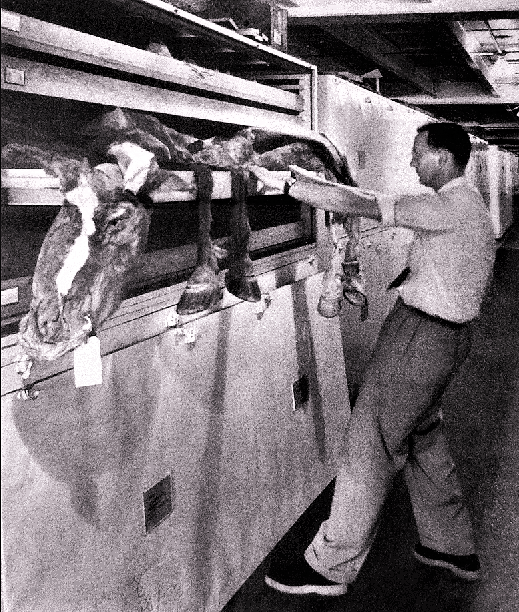By William C. Parke, grandson of Gen. Pelham Davis Glassford

During World War I, Gen. John J. Pershing’s favorite horse, named Kidron, was among a group of gelding thoroughbreds captured by the French from the Germans in 1917.
Brig. General Pelham Davis Glassford was offered one of those horses by the French command, as a gesture of gratitude, knowing how skilled Pelham was on horseback. Pelham was also respected in France as he could converse in the French language from the time his father, Colonel William Alexander Glassford in the US Army Signal Corps, took his two sons to Paris, France, to study the French signal balloons.
The family stayed in Passey (Paris) from 1892 to 1895. Gen. Pelham Glassford knew and appreciated good horses from the time he grew up on his father’s farm and ranch in Phoenix, Arizona.
Pelham selected a stately and healthy young stallion, with good looks, a gentle manner, and evident intelligence. This horse was later named Kidron by Pershing (Kidron is a town near Jerusalem).
Later, while Pelham was away from the Army stables, Gen. Pershing visited and saw a beautiful horse. He took a liking to him. He called for the horse, saying he did not want that fine specimen sent to the front lines. When Pelham returned, he asked General Pershing if he could have his horse back. Pershing said Kidron had a lame leg and needed to rest. (Pelham later said this was true.) Although Pershing eventually kept the horse, Pelham and Pershing had an understanding, even joking about the transfer.
The first picture below shows Brig. General Pelham Glassford (right) in France in 1918 riding his horse Kidron, with the distinctive white hair on his back feet and forehead.

The second photo shows General Pershing riding Kidron. As can be seen by the inscription, the photo was given to Pelham by Pershing.

A month before Pershing left France, he purchased Kidron from the Army. He asked Col. George C. Marshall (later known for the Marshall Plan) to arrange for Kidron’s transport to Newport News, Virginia, via the ship Kentuckian, along with an army veterinarian designated to care for and protect the horse.
As seen below, Pershing rode Kidron in the Victory parade down the Champs D’Elise in Paris. An observer noted that Kidron had the “haughty look of an equine conqueror.” However, Kidron did not carry Pershing in the New York parade, nor the one in Washington, D.C. Instead, he was still being held in quarantine at Newport News, where he would stay for five months. Regulations specified that war horses were to be quarantined 30 days in France and 150 days in America. The Department of Agriculture feared an infection which would spread to other horses. Included in their concern was that during the War, German-paid dockhands in the U.S. had infected horses and mules in 1915 and 1916. (See The Fourth Horseman by Robert Koenig)

After being released from quarantine, Pershing reported that Kidron had become “a naturalized and enthusiastic loyal American.” Kidron spent some time at Pershing’s home turf and stables in Chevy Chase, Maryland, but eventually, Pershing felt it was time to put Kidron out to pasture, and so he took his faithful horse to the U.S. Army Remount Depot in Front Royal, Virginia. As a final gesture of affection, and to follow his doctor’s suggestion of more exercise, General Pershing was reported to have ridden Kidron the 70 miles from Warrenton, Virginia to the Depot.

Kidron died at age 36 on October 10, 1942, in Front Royal, Virginia. Hoping to have the horse mounted, the War Department turned over the remains to the U.S. National Museum. However, because the body had decomposed due to hot weather, taxidermists though it best to not mount the skin and bones. His bones were buried in Greenfield near Front Royal, but his gravestone was sent to a Midwestern museum. His skin and skull went to the Smithsonian.
Pershing visited Kidron at Front Royal in 1938, and when Gen. Pelham Glassford was recalled to Washington during World War II, he also went to see Kidron. Pelham saved a photo from Life Magazine (Sept. 28, 1953) showing Kidron’s sorrel hide and head in storage. The caption for that photo reads: “Kidron…gazes dolefully from his shelf in the mammal division.”
